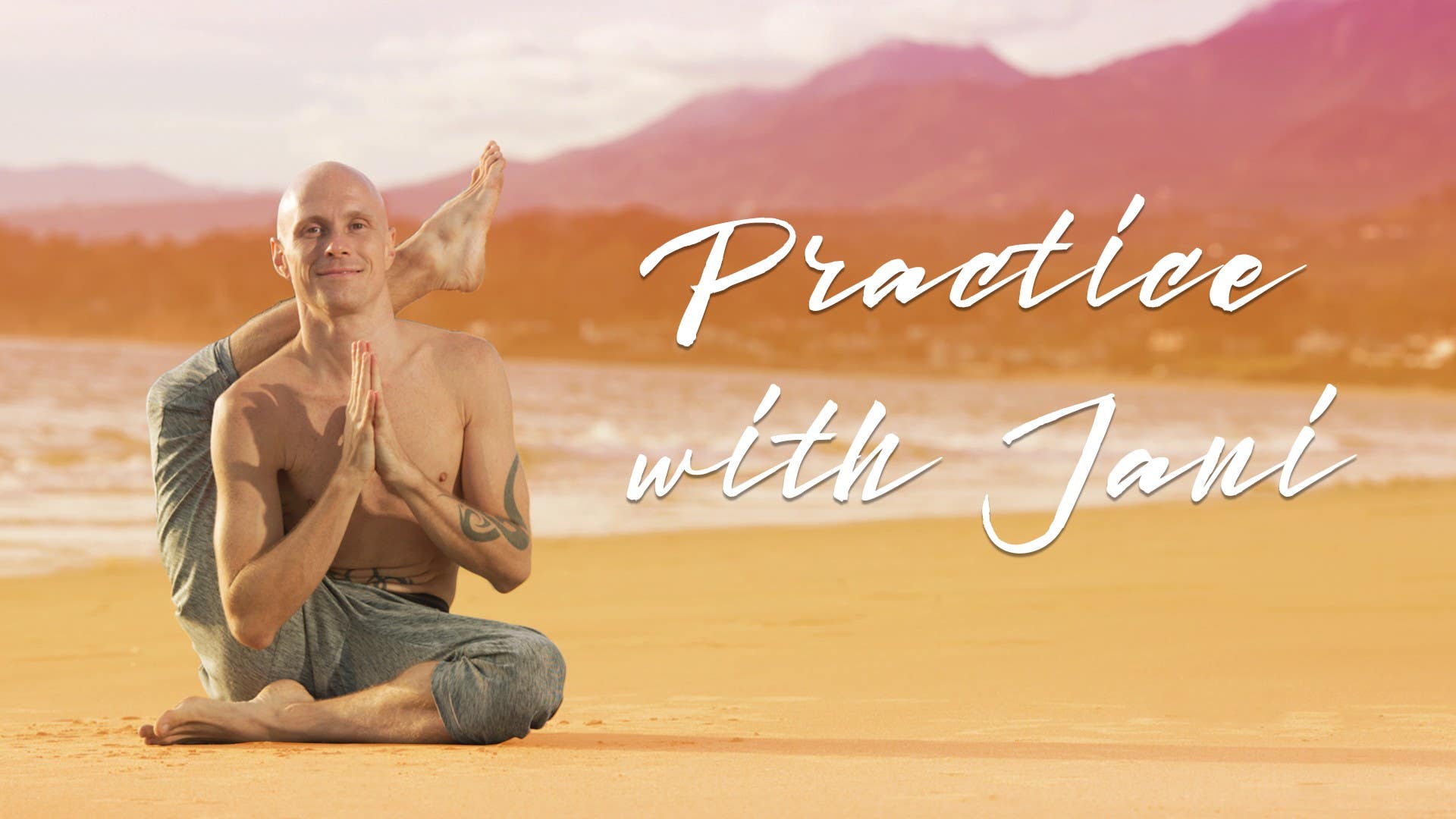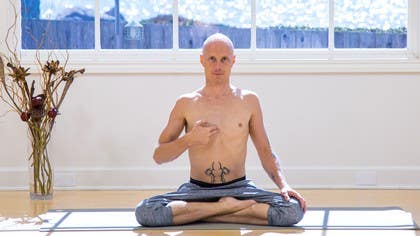Description
About This Video
Transcript
Read Full Transcript
(ocean wave lapping) So what we did now, what's that we did, four abdominal breathing techniques. We had passive abdominal breathing, purna tha jathara bhedana. Then half passive ardha tha jathara bhedana. Then we have half active, ardha ha jathara bhedana and full active, purna ha jathara bedhana. These were the four abdominal breathing what we did, and these are, gradually they bring the help to calm the mind.
And then we have four ujjayis, which is, vishuddi vakya ujjayi, anhata vakya ujjayi, heart center, manipura vakya ujjayi, navel. And then we have maha vakya, which is the perineum. And these were representing the levels of consciousness mind, intellect, ego, and the perineum is the self. So how we are gonna build this inside the asana practice is let's say if we have the sequence, we have the sun salutation. We have the standing postures, then we have the sitting sequence, inverse and the savasana.
So when you start sun salutation. Sun salutation there jathara bhedana is purna ha. Is the full active and ujjayi is vishuddi vakya ujjayi, which is the throat center ujjayi. So that's when you do the sun salutation. Then after sun salutation when you start do to the standing sequence, then we still abdominal breathing is the same, purna ha full active and then the ujjayi is moving now to the anahatha.
This is the heart center. So that's for the standing sequence. And then when we go to the mat, when we have the sitting sequence, we have the abdominal breathing is now ardha ha, so half active, so where you control the dome of the diaphragm. Then we have ujjayi, for that is manipura, so that you feel the ujjayi in the navel center. So that's for the sitting sequence.
And then when you do the inversions, then we have half passive breathing, I say abdominal breathing. You remember those that controlling the dome of the diaphragm and passive breathing and then the ujjayi is the perineum. And then we come to the savasana, naturally we don't have ujjayi and breathing is also passive which is the purna tha jathara bhedana. So this is how this works when you do the asana practice. Now basically we have the asana practice but we have the pranayama practice inside the asana practice, where it's different.
It's a little bit like trying the car. You don't always try with the same gear. You're actually changing or bicycle. Let's be leaving it more natural. So riding the bicycle, you understand when there is uphill you change the different gear and downhill you change.
Same way where the different state of asana practice, there is different breathing techniques for this. You can do as a pranayama practice. How do you build it if you do the pranayama? What you can do is that you start with this passive abdominal breathing. Then you go to the half passive and then after that you go to the half active and then full active abdominal breathing.
When you are in full active abdominal breathing, then you engage the vishuddi vakya. After that vishuddi vakya ujjayi, which is the throat center comes to that full active. Then you start to tone down your breathing. You go to the half active, and then you go to the anahata ujjayi and then you go to the then you go to the manicure vakya ujjayi, which is the navel center. And abdominal breathing is which is supporting that it's also toning down to the ardha ha.
And then we have last we have the maha vakya ujjayi. And the abdominal breathing is passive, which is the purna tha. And then after that, when you release this maha vakya, then you end up back the same way you started, which is the purna tha jathara bhedana. So you kind of, once as you made the cycle, like a circle with the breathing. Thank you.






You need to be a subscriber to post a comment.
Please Log In or Create an Account to start your free trial.